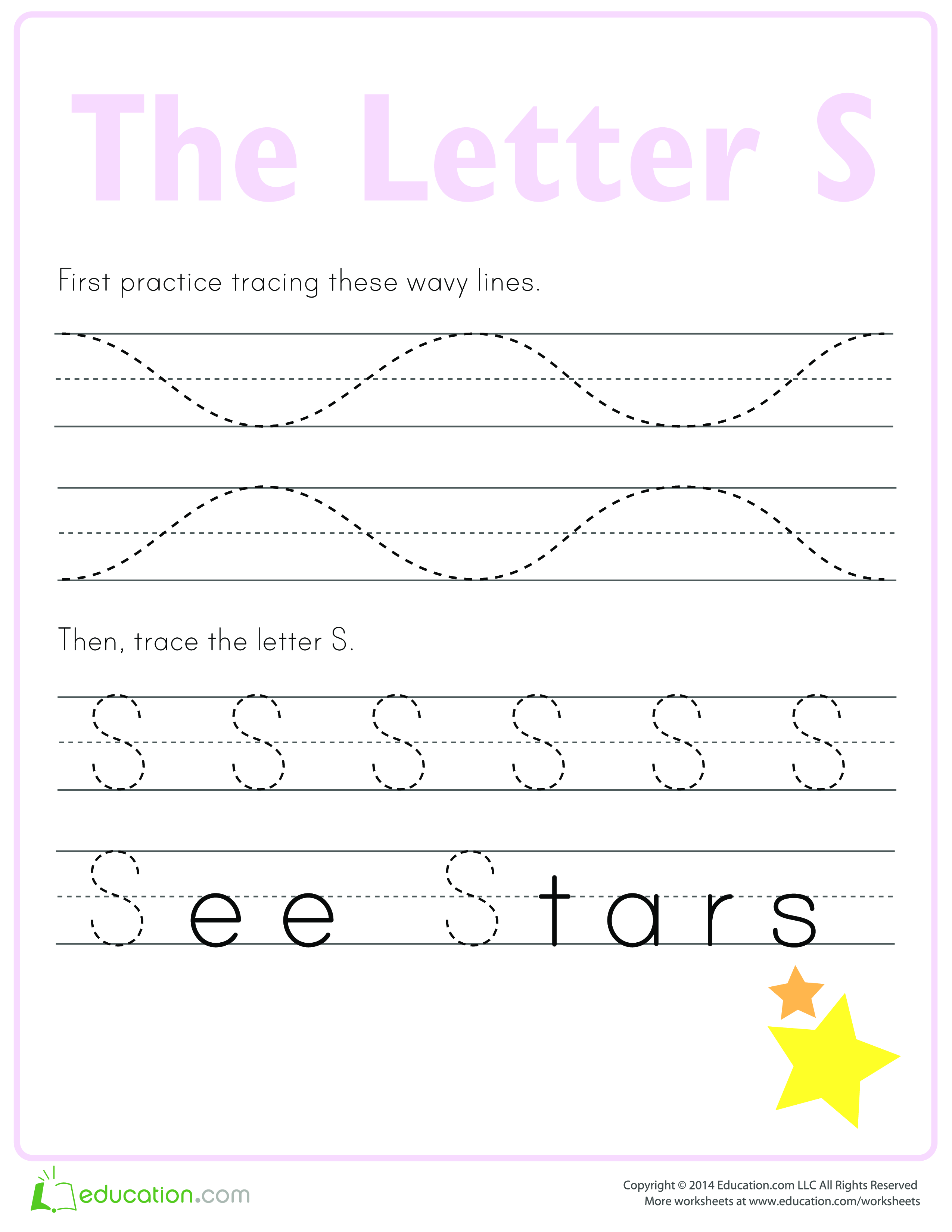Learn to write letter S

Guardar, completar los espacios en blanco, imprimir, listo!
Would you like to find a template that will assist your child in learning how to write letters? What are the letters that need to be learned to write first? Download this template with lines and shapes that can help your child understand.
Formatos de archivo disponibles:
.pdf- Este documento ha sido certificado por un profesionall
- 100% personalizable
Education Educación school colegio preschool preescolar learn to write aprende a escribir
Would you like to find a template that will assist your child in learning how to write letters? What are the letters that need to be learned to write first? Download this template with lines and shapes that can help your child understand how a letter is structured. You can also provide your child with examples of letters and encourage them to practice writing them. Finally, provide positive reinforcement to help them stay motivated.
Practicing alphabet letter writing with children is an important part of their early literacy development. Here are some effective strategies to help children practice writing alphabet letters:
- Start with Their Name: Begin by teaching your child to write their own name. This is a meaningful and motivating way to introduce letter writing.
- Use Alphabet Worksheets: There are many printable alphabet worksheets available online. These worksheets provide traceable letters and space for independent writing. Look for worksheets that match your child's skill level, starting with uppercase letters and then moving to lowercase.
- Practice One Letter at a Time: Focus on one letter at a time to prevent overwhelming your child. Start with the letters in their name or the letters they encounter most frequently.
- Use Proper Strokes: Teach your child the correct way to form each letter. Demonstrate the starting point, direction of strokes, and order of lines.
- Large and Small Movements: Encourage your child to practice both large and small motor skills. They can write letters in the air with their finger and on paper with writing instruments.
- Write on Different Surfaces: Writing on different surfaces can be fun and educational. Use chalk on the sidewalk, a whiteboard and markers, or even a tray of sand for tactile practice.
- Write in Sensory Materials: Allow your child to write letters in sensory materials like shaving cream, playdough, or finger paint. This adds a tactile and sensory element to letter practice.
- Practice Tracing and Copying: Begin with tracing letters on worksheets and gradually transition to copying letters without tracing as your child gains confidence.
- Use Letter Flashcards: Show your child flashcards with letters and encourage them to write the letter they see on the card.
- Letter Puzzles: Alphabet puzzles are a hands-on way for children to practice letter recognition and letter shapes. They can also trace the letters on the puzzle pieces.
- Write in Context: Incorporate letter writing into everyday activities. Ask your child to write a grocery list, label their drawings, or write thank-you notes.
- Interactive Apps and Games: There are educational apps and games designed to teach letter writing. Choose age-appropriate apps that make learning enjoyable.
- Modeling: Model proper letter writing by writing letters and words for your child to see. Encourage them to watch you write and explain your actions.
- Regular Practice: Consistency is key. Encourage daily or regular practice sessions, even if they're short.
- Positive Reinforcement: Offer praise and positive reinforcement for their efforts and progress. Celebrate their achievements, no matter how small.
- Make it Fun: Keep letter writing fun and engaging. Use colorful markers, stickers, or even a timer for short writing challenges.
- Patience and Encouragement: Be patient and encouraging. Avoid criticism and create a supportive and stress-free environment for learning.
- Variety: Keep letter writing fresh by using a variety of activities and materials to practice.
Remember that each child progresses at their own pace, so it's important to be patient and provide plenty of positive reinforcement. The goal is to make letter writing an enjoyable and rewarding experience that helps children develop their early literacy skills.
Using this alphabet writing template guarantees your family a funny learning experience that stimulates the brain and memory of your child(ren) and yourself!
This template is provided by a preschool education website, and it's credited to this template.
DESCARGO DE RESPONSABILIDAD
Nada en este sitio se considerará asesoramiento legal y no se establece una relación abogado-cliente.
Deja una respuesta. Si tiene preguntas o comentarios, puede colocarlos a continuación.
